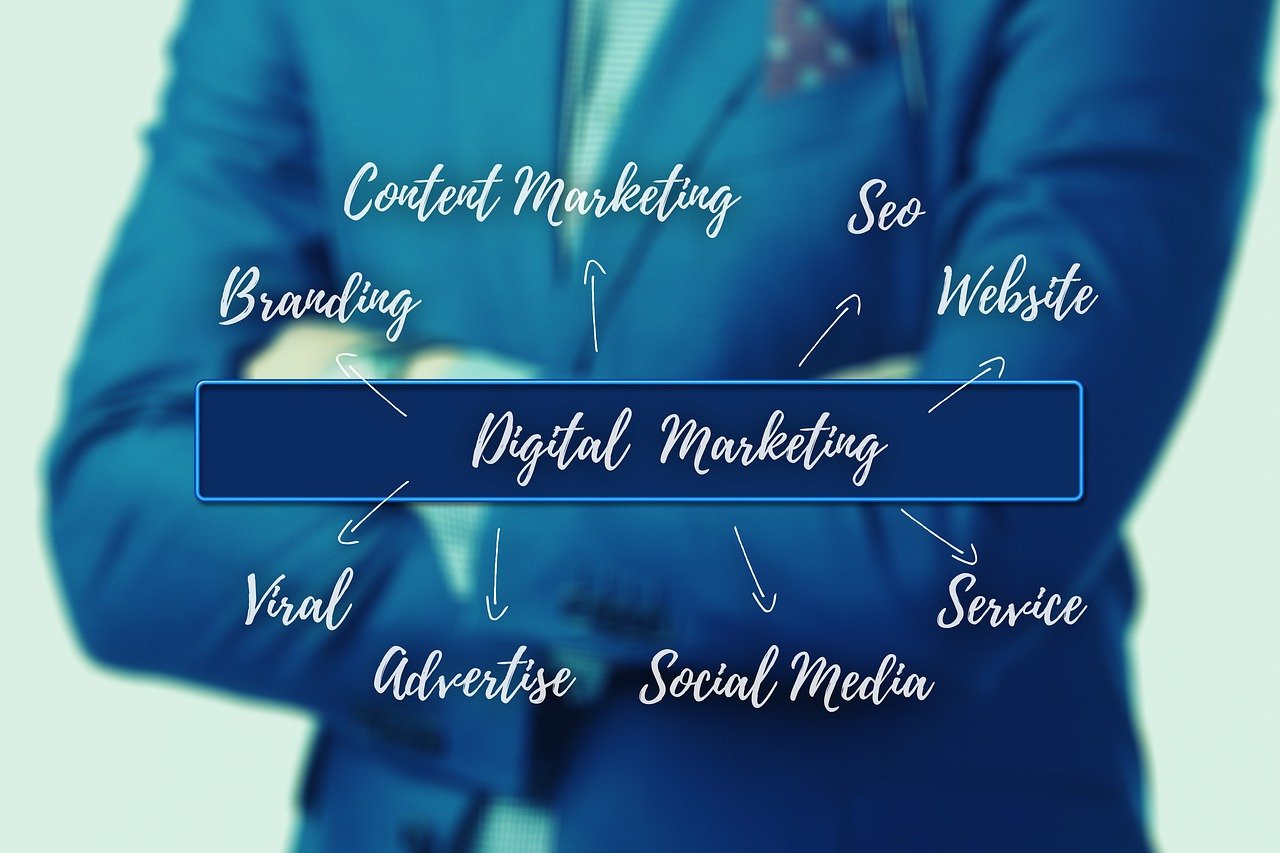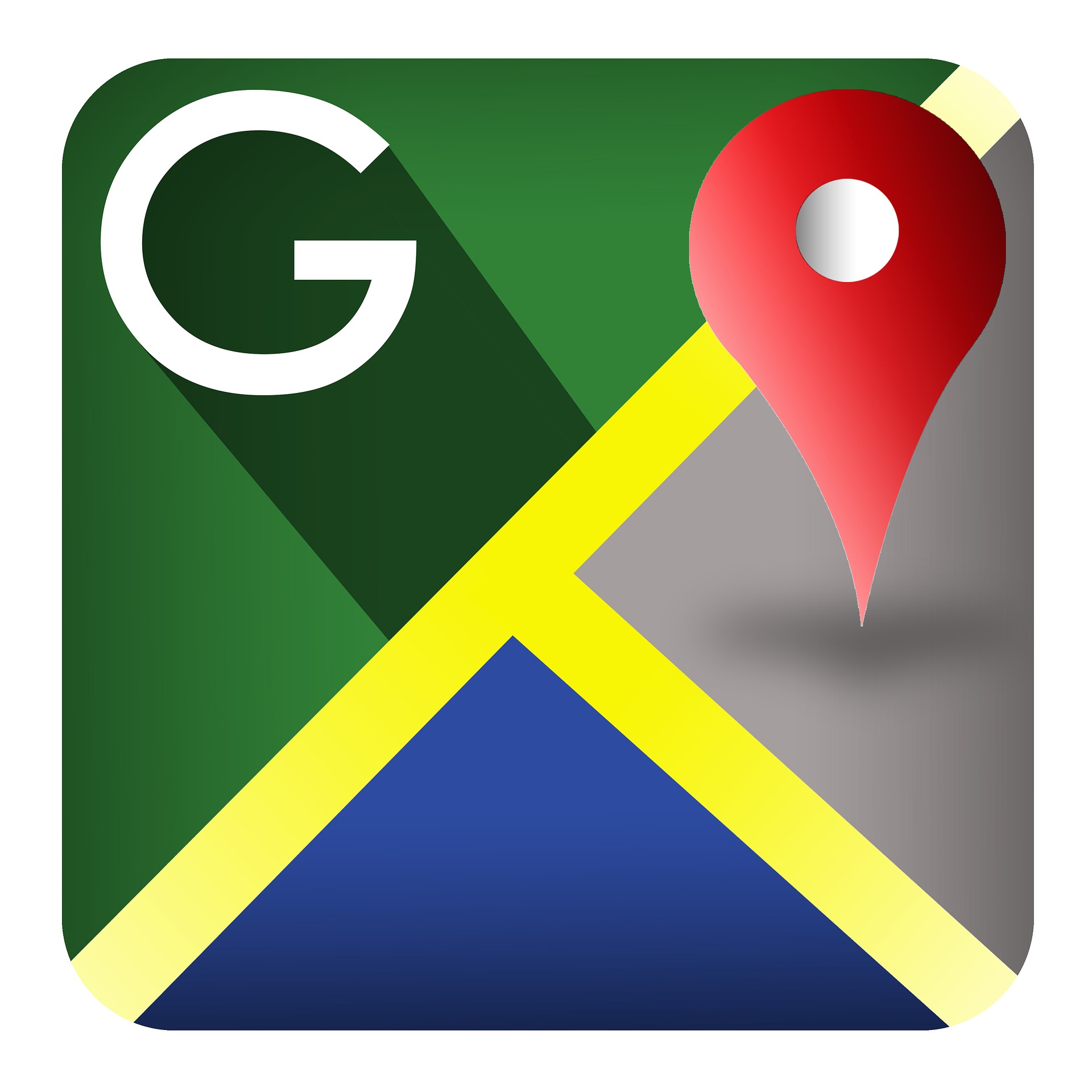Facebook reaches 3B+ users (ages 25-34), while Instagram’s 2B skew younger with double the engagement rates. Facebook excels at traffic and community building; Instagram creates stronger brand awareness. Small businesses should focus on the platform that best matches their specific audience and goals.
Read our other great article on Facebook vs Google here: https://amzoraltd.com/google-ads-vs-facebook-ads-cost/
Key Takeaways
- Facebook offers broader demographic reach (3+ billion users) while Instagram provides higher engagement with a younger audience (2 billion users)
- Instagram works best for visual storytelling and brand awareness, while Facebook drives more website traffic through direct link sharing
- Both platforms share Meta’s advertising infrastructure, but Facebook typically has lower cost-per-click while Instagram delivers higher engagement rates
- Content Marketing Agent helps small businesses maximize their social media marketing results through data-driven platform selection
- Most successful small businesses focus on 2-3 platforms rather than spreading efforts too thin across all social networks
Which Platform Will Drive Better Results for
Your Small Business?
For small business owners, choosing between Facebook and Instagram marketing isn’t about following trends—it’s about strategically allocating limited resources for maximum impact. While both platforms fall under Meta’s umbrella, they serve different purposes and audiences in your marketing mix.
At Content Marketing Agent, we’ve helped many small businesses find the right mix of platforms for their specific goals. Understanding what each platform does best is the first step toward building a social media strategy that actually delivers results.
Audience Demographics: Who Are You
Trying to Reach?
Facebook’s Broad Appeal: 3B+ Users Across Age Groups
Facebook remains the leader in terms of pure reach, with over 3.065 billion monthly active users worldwide. Its demographic center is the 25-34 age bracket, which makes up nearly 30% of users. What makes Facebook valuable for small businesses is its broad age distribution, maintaining significant user bases across generations from millennials to baby boomers.

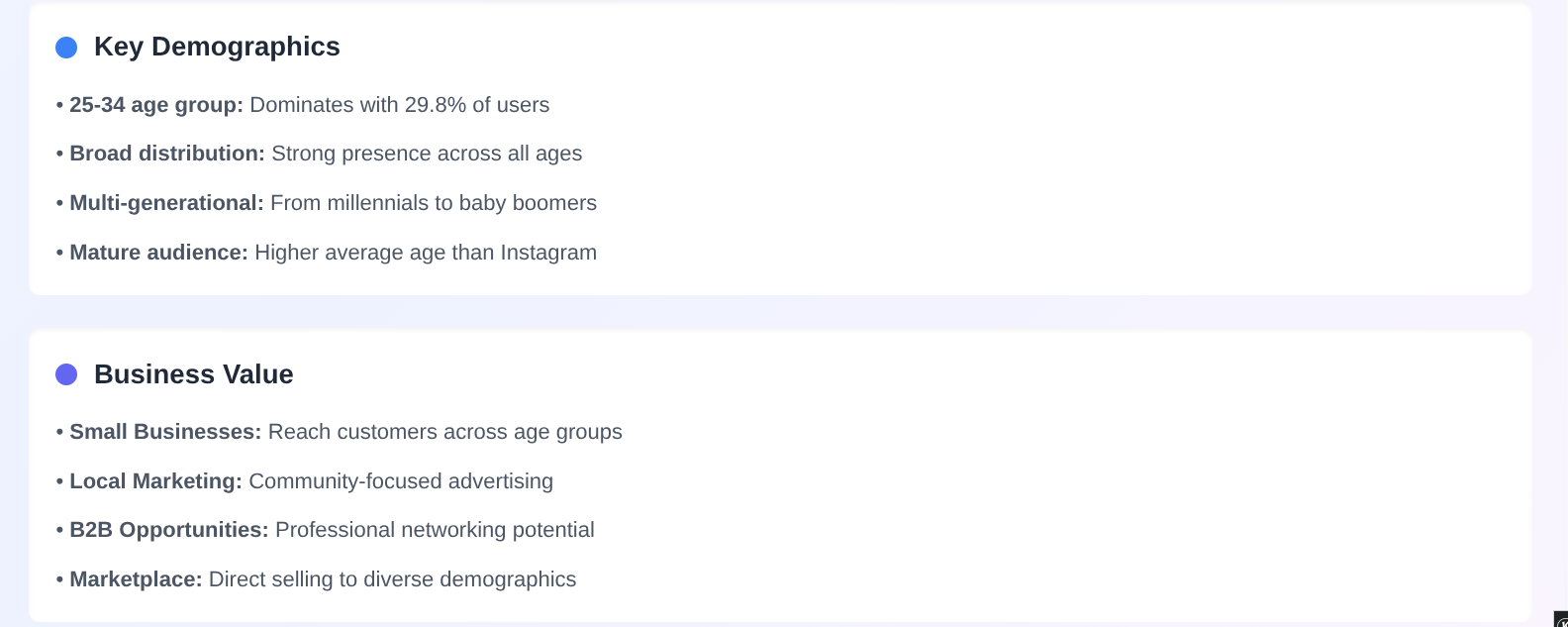
This wide demographic reach makes Facebook effective for businesses with products or services that appeal to multiple age groups. If your ideal customer isn’t strictly defined by age—for example, if you run a local restaurant, home service business, or multi-generational retail store—Facebook offers the broadest possible audience reach.
Instagram’s Visual-First Younger Audience
While Instagram’s 2 billion monthly active users might seem modest compared to Facebook, its user base concentrates among younger demographics. The platform’s largest age group is 18-24 (30.8%), followed closely by 25-34 year olds. This makes Instagram particularly powerful for businesses targeting millennials and Gen Z consumers.
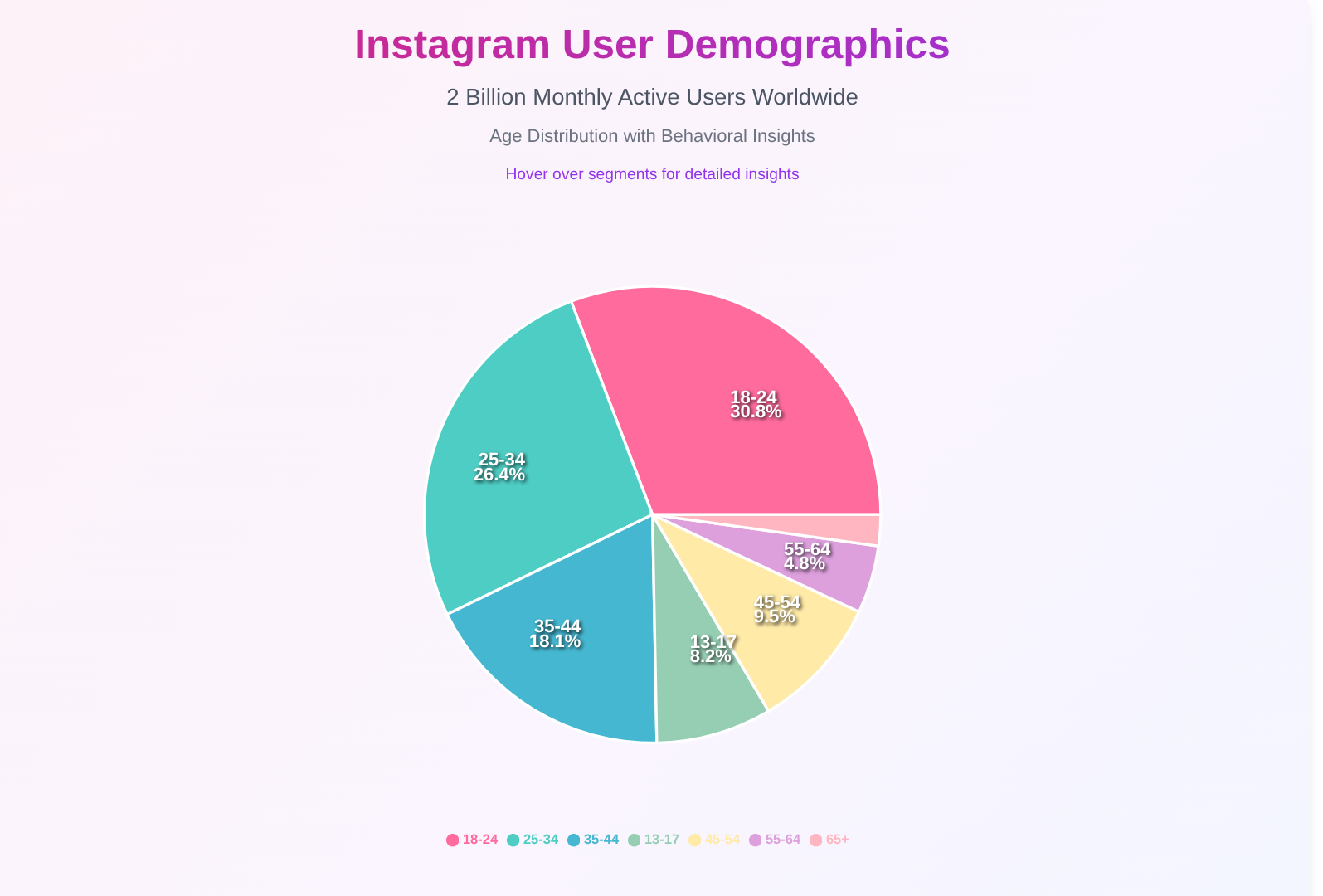
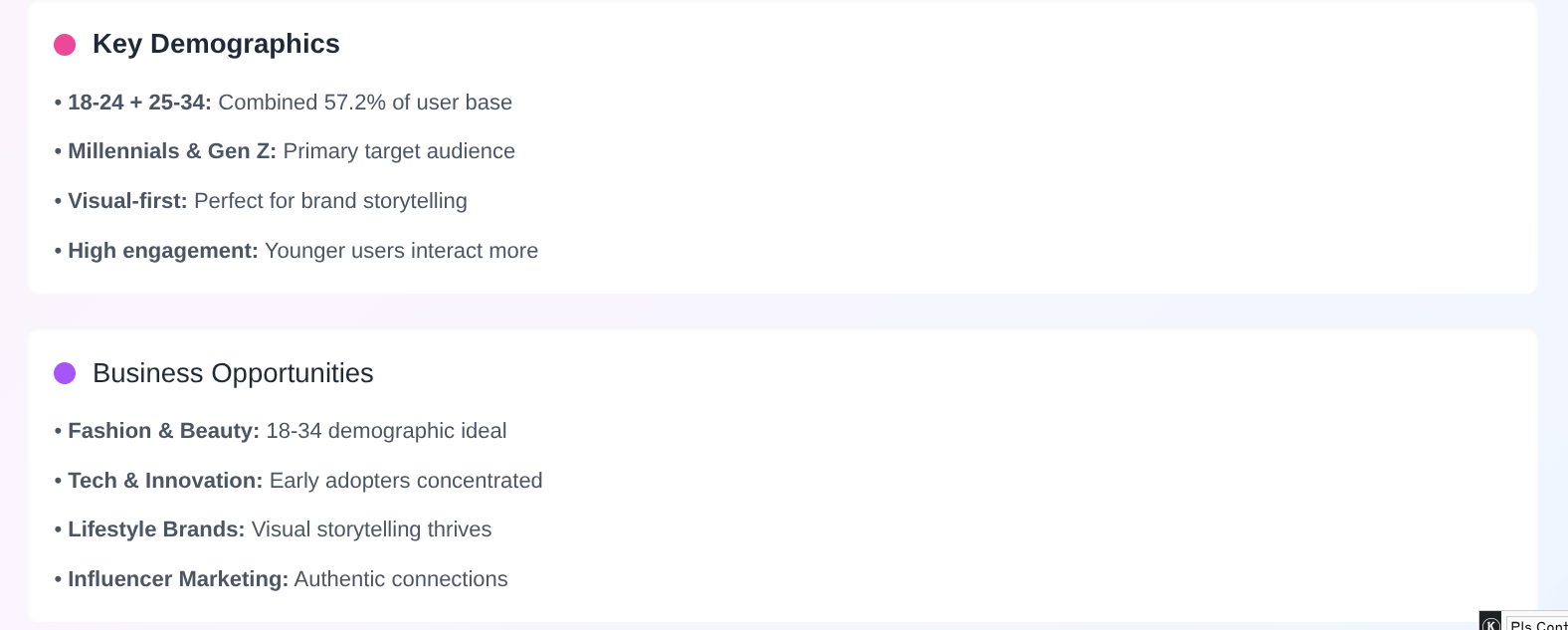
Instagram users also interact with the platform differently—they’re generally in discovery mode, actively seeking new brands, products, and visual inspiration. This exploratory mindset creates good conditions for brand awareness campaigns and visual storytelling that wouldn’t necessarily perform as well on Facebook.
Key Demographic Differences That Impact Marketing Success
The demographic differences between these platforms directly impact your marketing approach. Facebook’s diverse age distribution means your messaging might need to be more broadly appealing or specifically targeted through detailed audience segmentation. On Instagram, the younger audience typically responds better to authentic, trendy content that feels less polished and more genuine.
Consider your buyer personas carefully before deciding where to invest your marketing budget. If your target customers are professionals in their 30s-50s, Facebook might deliver better results. For brands targeting fashion-conscious consumers under 35, Instagram could be the clear winner.
Content Strategy Differences That
Drive Results
Facebook’s Versatility: Text, Links, Videos and Community Building
Facebook’s platform supports virtually any content format you can imagine. This versatility makes it particularly valuable for small businesses with diverse content needs. Some of Facebook’s key content strengths include:
- Link sharing: Facebook excels at driving website traffic through direct link sharing in posts, making it ideal for promoting blog articles, product pages, or landing pages.
- Community building: Facebook Groups create powerful spaces for cultivating customer communities and fostering deeper brand relationships.
- Long-form content: Unlike Instagram’s visual focus, Facebook accommodates longer text posts, allowing for more detailed product information or company updates.
- Varied media formats: From photo albums and events to polls and notes, Facebook offers the widest range of content options.
Small businesses that use Facebook effectively often position it as a hub for their overall digital presence, connecting their website, blog content, and community engagement in one platform.
Instagram’s Visual Storytelling Through Photos, Stories and Reels
Instagram is built around visual storytelling, making it the perfect platform for businesses with strong aesthetic appeal or compelling visual narratives. The platform’s strengths center on:
- High-impact imagery: Product photos, lifestyle imagery, and behind-the-scenes content work well on Instagram’s visually-focused feed.
- Stories format: The ephemeral 24-hour Stories feature encourages authentic, in-the-moment content that humanizes your brand.
- Reels: Short-form video content on Reels generates nearly 2% engagement rates—almost double that of standard posts—making it Instagram’s most powerful format for organic reach.
- Shopping features: Instagram’s integrated shopping tools create direct paths from discovery to purchase for product-based businesses.
Businesses that succeed on Instagram typically invest in creating a visually cohesive feed that reinforces their brand identity while using Stories and Reels for more spontaneous, trend-driven content.
Platform-Specific Features Worth Using
Both platforms offer unique features that smart small businesses can use for growth:
Facebook-specific opportunities:
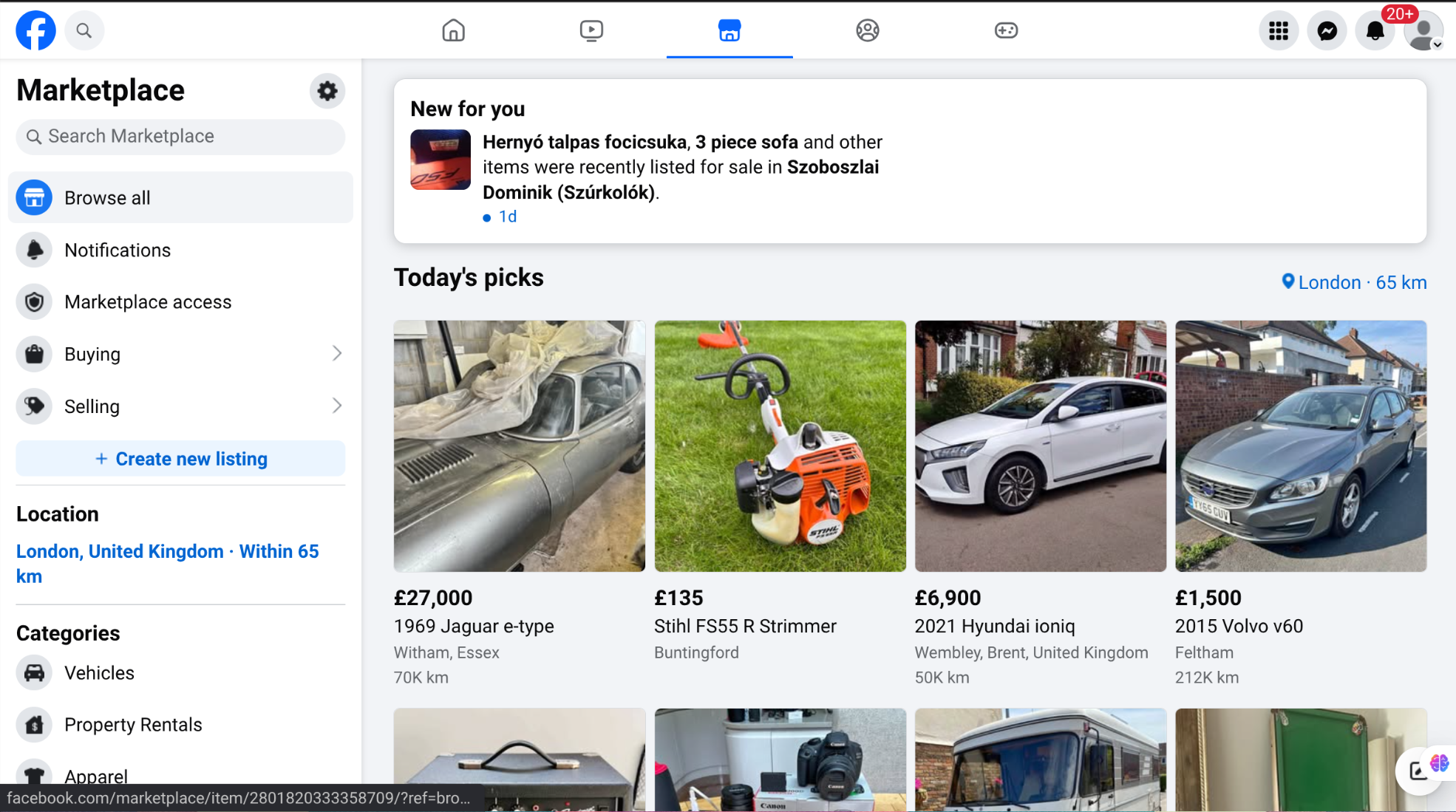
- Facebook Live for interactive Q&As and product demonstrations
- Events for promoting in-person or virtual gatherings
- Marketplace listings for local service businesses
- Groups for creating membership communities around your brand
Instagram-specific opportunities:
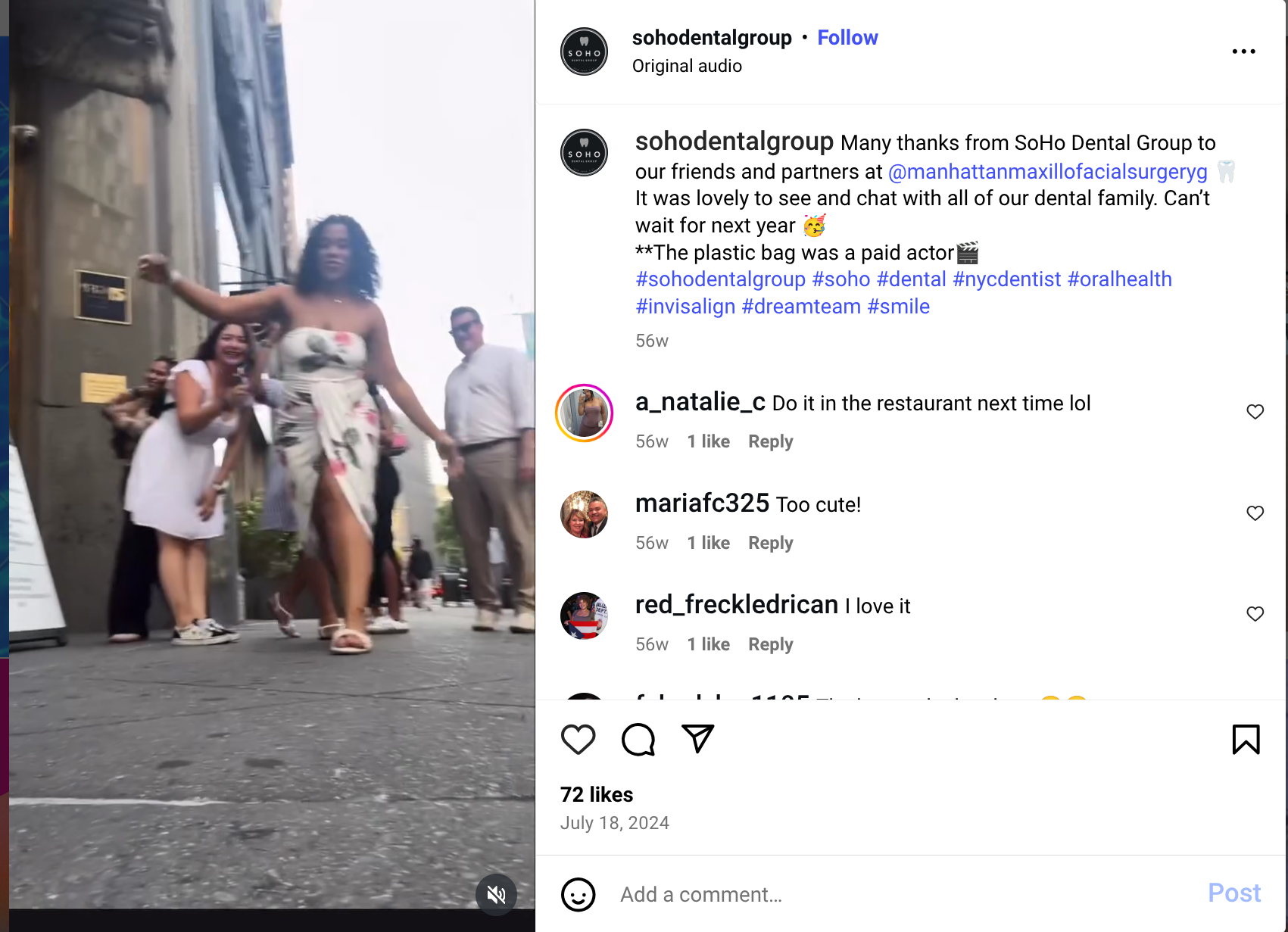
- Instagram Guides for creating curated collections of products or educational content
- Collaborative posts to partner with complementary brands or influencers
- Story Highlights to preserve and categorize your best ephemeral content
- Close Friends lists for exclusive content targeted to your most loyal customers
Advertising Performance and ROI Comparison
Cost Differences: Facebook’s Lower CPC vs. Instagram’s Higher Engagement
When it comes to advertising investment, Facebook typically offers a lower cost-per-click (CPC) than Instagram. This makes it an attractive option for small businesses with limited marketing budgets who prioritize driving traffic and conversions. Facebook’s more mature advertising platform and broader user base contribute to this cost efficiency.
Instagram ads, while generally more expensive on a per-click basis, tend to generate higher engagement rates. This means that while you might pay more for each click, those users are often more engaged and likely to convert. For brands focused on building awareness and creating emotional connections with potential customers, Instagram’s higher engagement rates can justify the premium price.
Ad Format Effectiveness by Platform
Both platforms support similar ad formats through Meta’s shared advertising infrastructure, but their effectiveness varies based on user behavior and platform design:
- Facebook Carousel Ads excel at showcasing multiple products or telling sequential stories within a single ad unit
- Instagram Story Ads deliver immersive full-screen experiences that capture attention in ways that feed ads cannot match
- Facebook Lead Ads are optimized for form completions and direct response generation
- Instagram Shopping Ads create more direct discovery-to-purchase journeys for product-based businesses
Small businesses should test multiple ad formats on each platform to determine which combinations deliver the best results for their specific objectives.
Targeting Capabilities and Audience Reach

While both platforms use Meta’s targeting infrastructure, there are subtle differences in how audience targeting functions:
Facebook’s extensive user data provides refined targeting options, especially for interest-based and behavioral targeting. The platform works well at reaching specific audience segments based on detailed demographic factors and is particularly effective for reaching older demographics.
Instagram’s targeting capabilities tend to deliver better results when focused on lifestyle categories and visual content, making it ideal for reaching Gen Z and younger millennials. The platform naturally connects businesses with users likely to engage with visually similar content.
Platform Selection Based on Business Type
1. Best Platform for Service-Based Businesses
Service businesses typically benefit more from Facebook’s community-building features and versatile content formats. Consultants, home service providers, and professional service firms can use Facebook to:
- Share detailed information about their services
- Build credibility through client testimonials
- Create meaningful community engagement through Groups
- Generate leads through form-based advertising
While Instagram can complement these efforts, especially for services with visual elements, Facebook typically delivers stronger results for service-based businesses.
2. Best Platform for Product-Based Businesses
Product-based businesses often find Instagram’s visual nature perfectly suited to showcasing their offerings. Retailers, e-commerce brands, and manufacturers can use Instagram to:
- Create stunning product photography that inspires purchases
- Demonstrate products in action through Reels and Stories
- Enable direct shopping through shoppable posts
- Build brand awareness through visual storytelling
Facebook remains valuable for product businesses as well, particularly for driving traffic to e-commerce sites through direct link sharing.
3. Best Platform for Local Businesses
Local businesses benefit from both platforms in complementary ways:
Facebook’s location-based features make it particularly strong through:
- Local awareness ads targeted to specific geographic areas
- Events promotion for in-store activities
- Recommendations and reviews that build trust
Instagram supports local business marketing through:
- Location tags that help users discover nearby businesses
- Visual showcasing of locations and experiences
- Stories highlighting daily specials or limited-time offers
4. Best Platform for B2B Companies
Business-to-business companies typically find Facebook more effective than Instagram, particularly for:
- Sharing industry insights and thought leadership
- Promoting webinars and professional events
- Building professional communities through Groups
- Targeting decision-makers through detailed job title targeting
5. Best Platform for Startups and Solopreneurs
For startups and solopreneurs with limited resources, platform selection should be especially strategic:
Facebook offers advantages for those aiming to:
- Build an initial customer base through targeted advertising
- Create a community around a new concept or solution
- Test different messaging cost-effectively
Instagram provides particular value for startups focused on:
- Creating strong brand identity through visual consistency
- Reaching younger, trend-focused demographics
- Showcasing product design and functionality
Create Your Integrated Strategy: When and How to Use Both Platforms
For many small businesses, the most effective approach isn’t choosing between platforms but strategically integrating both into a cohesive marketing plan. The platforms complement each other naturally, with Facebook’s community-building and traffic-driving capabilities supporting Instagram’s brand awareness and visual storytelling strengths.
Selecting just 2-3 social platforms and doing them exceptionally well typically delivers better results than spreading efforts too thin across many channels. Focus on where your specific audience spends their time and where your content can make the strongest impact.
Content Marketing Agent specializes in helping small businesses develop targeted social media strategies that maximize results across both Facebook and Instagram without overwhelming your resources.

